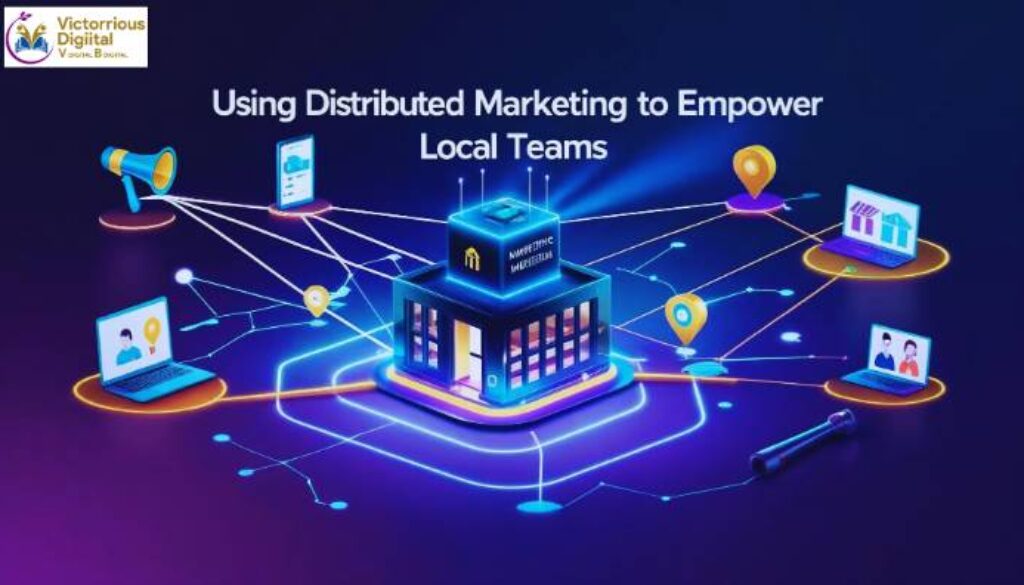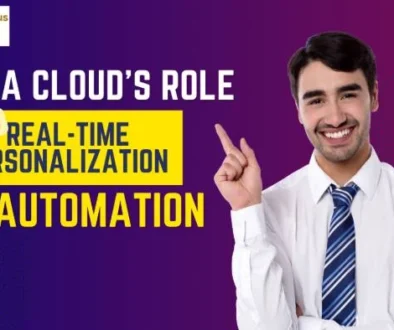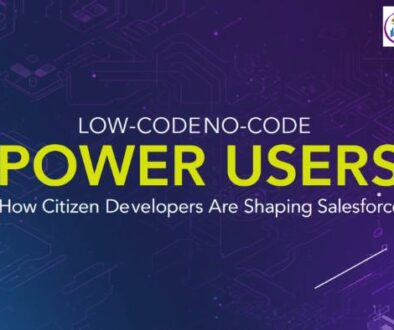Using Distributed Marketing to Empower Local Teams
In today’s fast-paced digital world, customers expect personal and timely communication. Businesses that operate in multiple locations—like franchises, dealerships, branches, or partner networks—often struggle to send consistent messages across all touchpoints. How can you maintain your brand voice while giving local teams the freedom to connect with their customers?
The answer is Distributed Marketing.
Distributed Marketing is a feature in Salesforce Marketing Cloud that helps central marketing teams create and control brand-approved messages, while allowing local teams to personalize and send them. Whether you’re working in retail, education, finance, or healthcare, Distributed Marketing can help you deliver the right message to the right person, from the right sender.
Table of Contents
What is Distributed Marketing?
Distributed Marketing is a solution in Salesforce that helps connect corporate marketing teams with local teams like sales reps, advisors, or agents.
Here’s how it works in simple terms:
- The marketing team creates content (emails, SMS, templates, etc.)
- These are saved and shared with local teams in a simple interface
- Local teams use these materials to send messages to their own customers, adding personal touches
- The marketing team still controls the brand, design, and messaging
It’s like giving your team a ready-made meal that they can season and serve their own way. This helps maintain brand consistency while also building personal relationships with customers.
Why Use Distributed Marketing?
Distributed Marketing brings many benefits for both marketing managers and local teams. Here’s why businesses use it:
1. Brand Control: Corporate marketing teams can design the content and ensure all messages follow brand guidelines. This prevents local branches from creating off-brand or inconsistent messages.
2. Personalized Communication: Local teams can customize messages with customer names, local offers, or specific appointments. This makes the messages feel more personal and relevant.
3. Time Saving: Local users don’t have to build messages from scratch. They simply choose a pre-designed template, add a few details, and send.
4. Better Customer Engagement: Customers trust messages that come from someone they know—like their local branch or advisor. Distributed Marketing helps build that trust.
5. Track and Analyze: Marketing Cloud provides tracking data on who sent what, when, and how customers responded. This helps you improve future campaigns.
Step-by-Step: How to Use Distributed Marketing
Now let’s break it down into simple steps. Even if you’re new to Salesforce Marketing Cloud, you’ll understand how to get started with Distributed Marketing.
Step 1: Set Up Distributed Marketing in Salesforce
Before using Distributed Marketing, your Salesforce system administrator needs to:
- Enable Distributed Marketing in Marketing Cloud
- Integrate Marketing Cloud with Sales Cloud or Service Cloud
- Assign the necessary user permissions to both marketing and local team members
Once it’s enabled, you’ll see Distributed Marketing options in your Salesforce org.
Step 2: Create Brand-Approved Templates and Messages
The central marketing team creates the content that local users will send. This could include:
- Email templates
- SMS templates
- Campaigns with multiple steps (e.g. confirmation + follow-up)
- Pre-written subject lines, images, and call-to-action buttons
Marketers can lock certain parts of the template (like the logo or footer) to keep the message consistent. Local teams can only edit specific sections like:
- Customer name
- Appointment details
- Location-based offers
This ensures a balance between brand consistency and personalization.
Step 3: Share Templates with Local Teams
After the templates are ready, the marketing team publishes them to the Distributed Marketing interface in Salesforce CRM (Sales Cloud or Service Cloud). This is where local users—like advisors, branch managers, or sales reps—can access them.
Local users don’t need to log in to Marketing Cloud. They use the regular Salesforce interface they are already familiar with.
This makes Distributed Marketing very easy to use, even for people who are not tech-savvy.
Step 4: Personalize and Send Messages
Now, local users can open a customer record in Salesforce and use the “Send Marketing Message” button.
Here’s what happens:
- They select a message template
- They fill in any required personal information (like customer name, appointment date, or a special note)
- They preview the message and hit send!
The message is sent through Marketing Cloud’s trusted infrastructure, so it follows all rules around deliverability and compliance.
Local users don’t have to design anything. They just pick, personalize, and send.
Step 5: Monitor Results and Improve
Once messages are sent, both marketing managers and local users can see how customers respond.
You can track:
- Email open rates
- Click-through rates
- Unsubscribe rates
- Conversion data (if linked to actions like booking or purchases)
Marketing teams use this data to:
- See which messages perform best
- Improve future templates
- Provide training or support to local users if needed
This creates a feedback loop where both central and local teams grow together.
Extra Tips for Getting Started with Distributed Marketing
If you’re new to Distributed Marketing, here are some helpful tips to make the process smooth:
- Start Simple: Don’t create too many templates at once. Start with 1 or 2 high-impact messages, like:
- Welcome emails
- Appointment reminders
- Follow-up messages
As your teams get comfortable, you can expand.
- Train Local Users: Even though the system is easy, a short training helps local users understand how to:
- Use the templates
- Personalize the content
- Respect message timing and frequency
Training can be done online or in small in-person sessions.
- Use Consistent Branding: Lock key elements like your company logo, colors, and footer text. This keeps all messages professional and on-brand.
- Respect Customer Preferences: Only send messages to customers who have opted in. Distributed Marketing follows the same data protection rules as Marketing Cloud, but it’s still important to stay careful and respectful.
- Monitor and Update Regularly: Review campaign results every month or quarter. Update templates based on customer feedback and performance.
Why Learn Distributed Marketing?
Distributed Marketing is becoming more popular because it helps businesses stay personal and professional at the same time. Learning this tool will help you:
- Work better in large marketing teams
- Connect corporate and local strategies
- Support franchise or branch marketing efforts
- Get skilled in customer engagement automation
If you’re planning a career in digital marketing or Salesforce CRM, this is a great skill to have. Many companies are looking for professionals who can manage both marketing tools and CRM platforms.
The good news is—you can learn all of this in a step-by-step way through Salesforce Marketing Cloud Training in Pune, or by joining an online Salesforce Marketing Cloud course. These courses are designed for beginners and include hands-on practice with tools like Journey Builder, Email Studio, and Distributed Marketing.
Conclusion
Distributed Marketing is a smart solution for companies that want to combine brand consistency with personal customer engagement. It gives central teams the tools to create beautiful, approved content and empowers local teams to use that content to connect with their customers.
By following these simple steps—setting up the system, creating templates, giving access, and monitoring results—you can use Distributed Marketing to improve communication across your organization.
Whether you’re a marketing manager or just starting your career, learning how to use Distributed Marketing in Salesforce Marketing Cloud will give you a strong advantage.
Also Read : Marketing Cloud and AI | How Einstein Can Optimize Your Campaigns?




